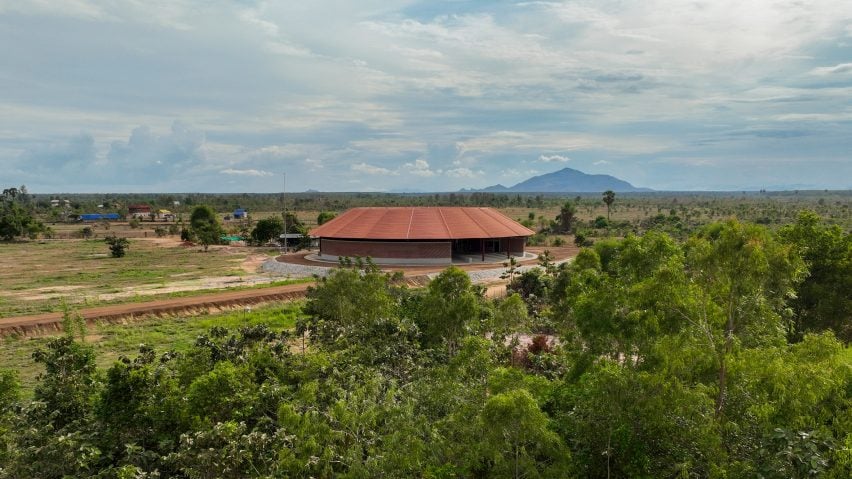
Perforated brickwork wraps The Gong music centre by Atelier Oï
Perforated brick walls wrap an open-roof stage at this circular music centre in Cambodia, completed by Swiss architecture studio Atelier Oï.
Named The Gong after its circular shape, the centre was designed for the 150-hectare campus of Smiling Gecko, an educational charity founded by Swiss photographer Hannes Schmid in 2014.
It contains recording studios, a cafe and offices around its auditorium, enclosed by walls of bricks that have been rotated or removed entirely to create textured surfaces that reference musical vibrations.
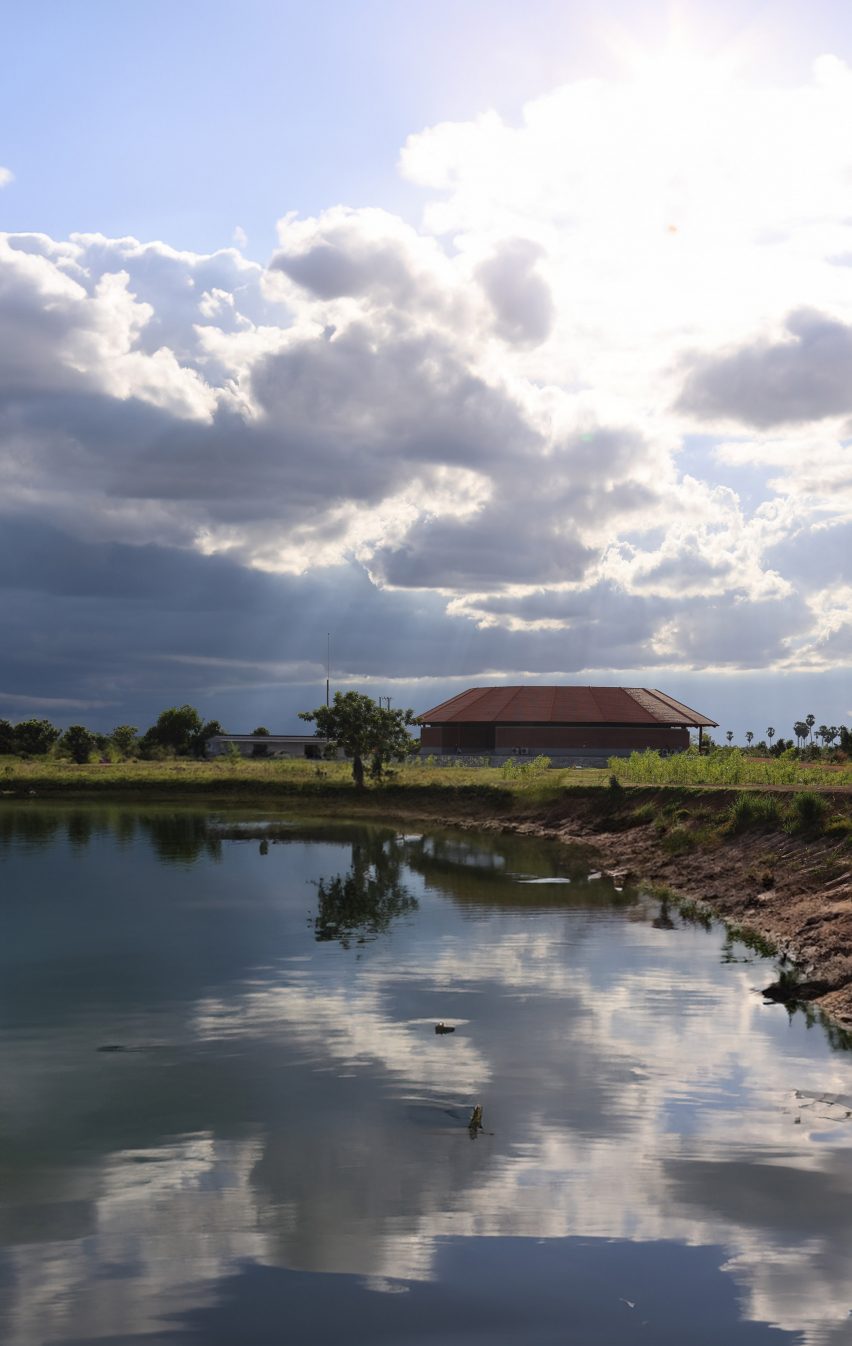
"The design was inspired by the gong, commonly used during ceremonies and rituals in Cambodian culture," explained Atelier Oï.
"We wanted to freeze the image of a sound pattern, the vibrations that spread out in concentric circles when the centre of the gong is struck," it added.
"Visually, the interplay of openings and protruding bricks creates a sculptural surface."
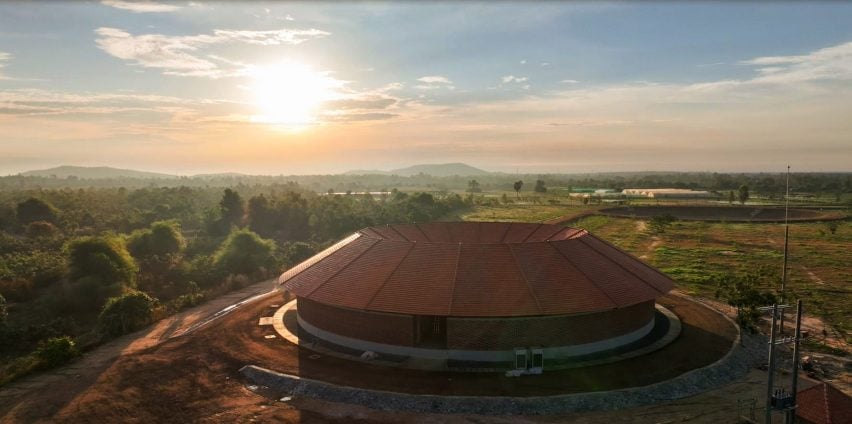
To protect it from flooding, The Gong is elevated on two metres of soil excavated during the creation of a nearby rainwater retention basin.
At its centre is a circular stage described by Atelier Oï as an impluvium – a type of atrium in ancient Greek and Roman homes used for the collection of rainwater.
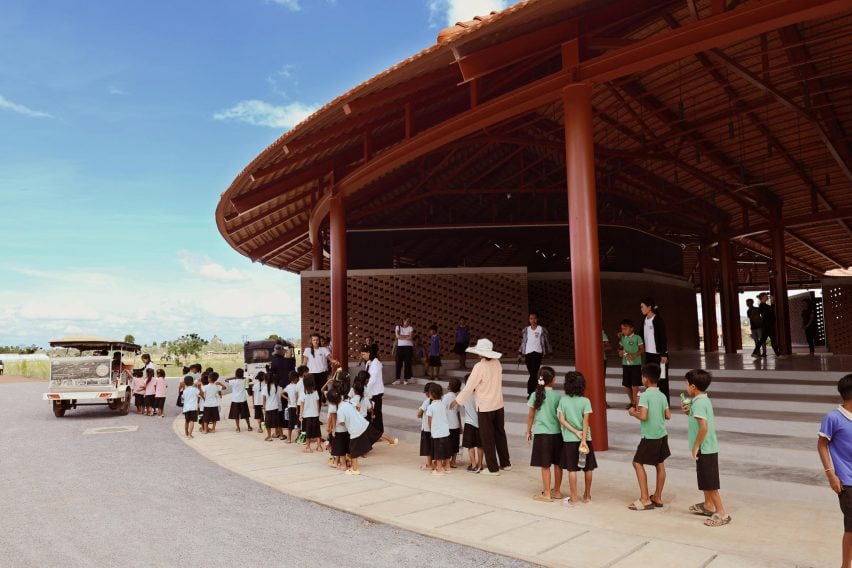
Informed by this concept, the funnel-shaped section of the tiled roof at the centre of The Gong channels water into a drain around the stage's perimeter.
It is then diverted to the nearby basin to be used for agricultural activities on the campus.
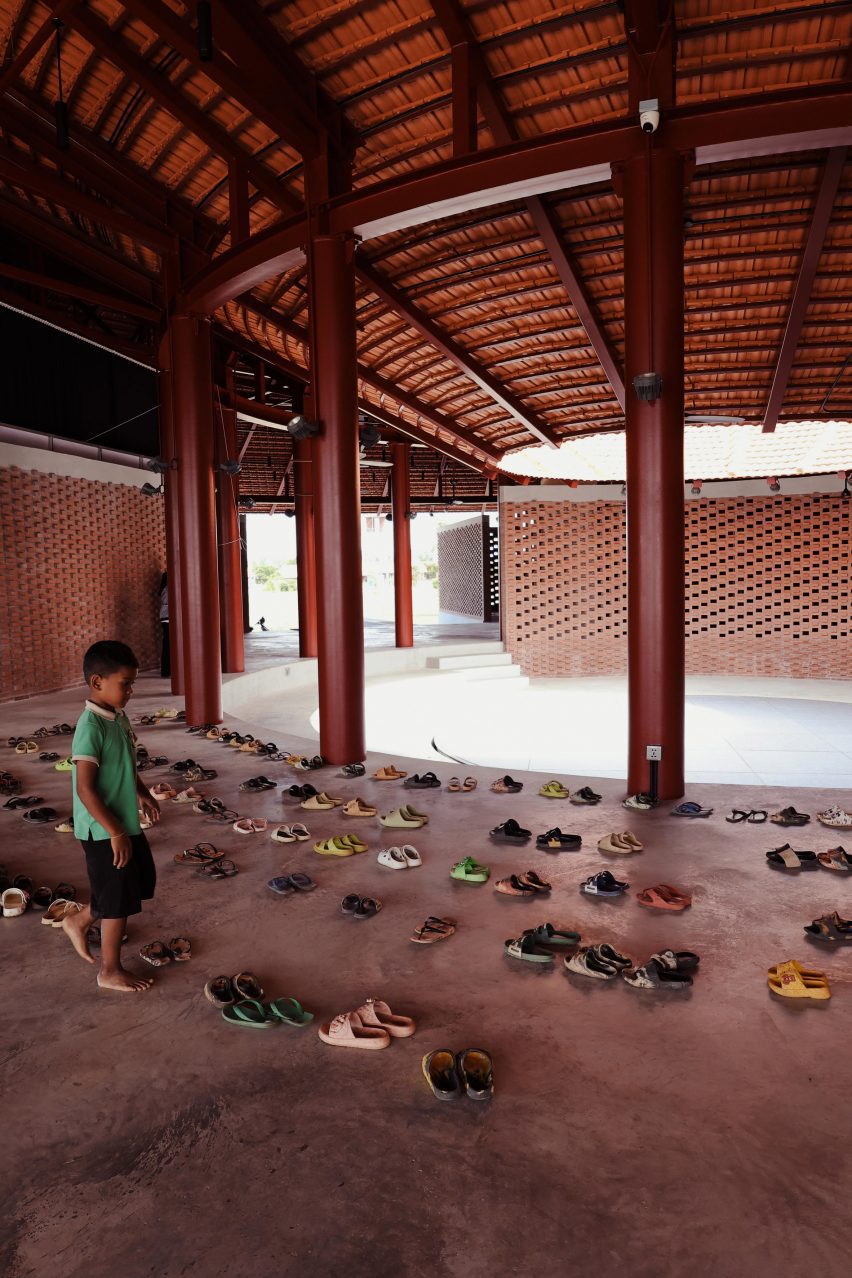
"The architecture plays with the idea of sculpting nature and turning it into a sensual element of the building," explained the studio.
"Atmospherically, it serves as a reminder of the world outside: the sounds and weather events become part of the building’s acoustic backdrop."
Openings on all sides of The Gong provide direct access from the campus into the central auditorium, with interstitial stepped areas forming gathering spaces and a seating area for the cafe.
The more enclosed studios and offices are connected by a semi-outdoor corridor wrapping the centre's perimeter, with areas of perforated brick wall providing ventilation between elements of steel structure, painted red to complement the brickwork.
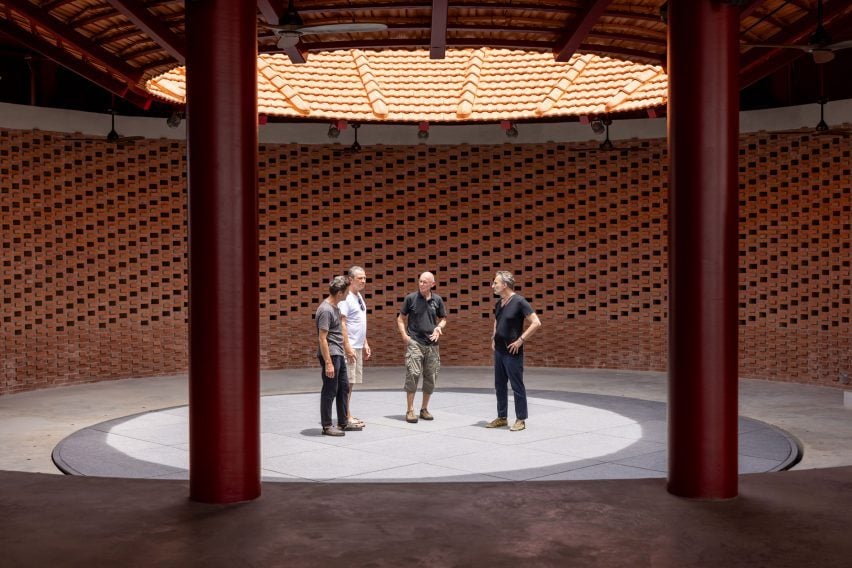
Alongside the exposed brickwork, the recording studios and vocal booths have been lined with timber acoustic panels and ceilings.
"All columns and the steel truss are painted in red, which brings them into a visual dialogue with the red roof tiles and bricks," explained the studio.
"The combination of rough and smooth, cool and warm, shiny and matte surfaces ensures exceptional tactile and visual quality, even though the materials used – concrete, steel and bricks – are simple, everyday building materials," it added.
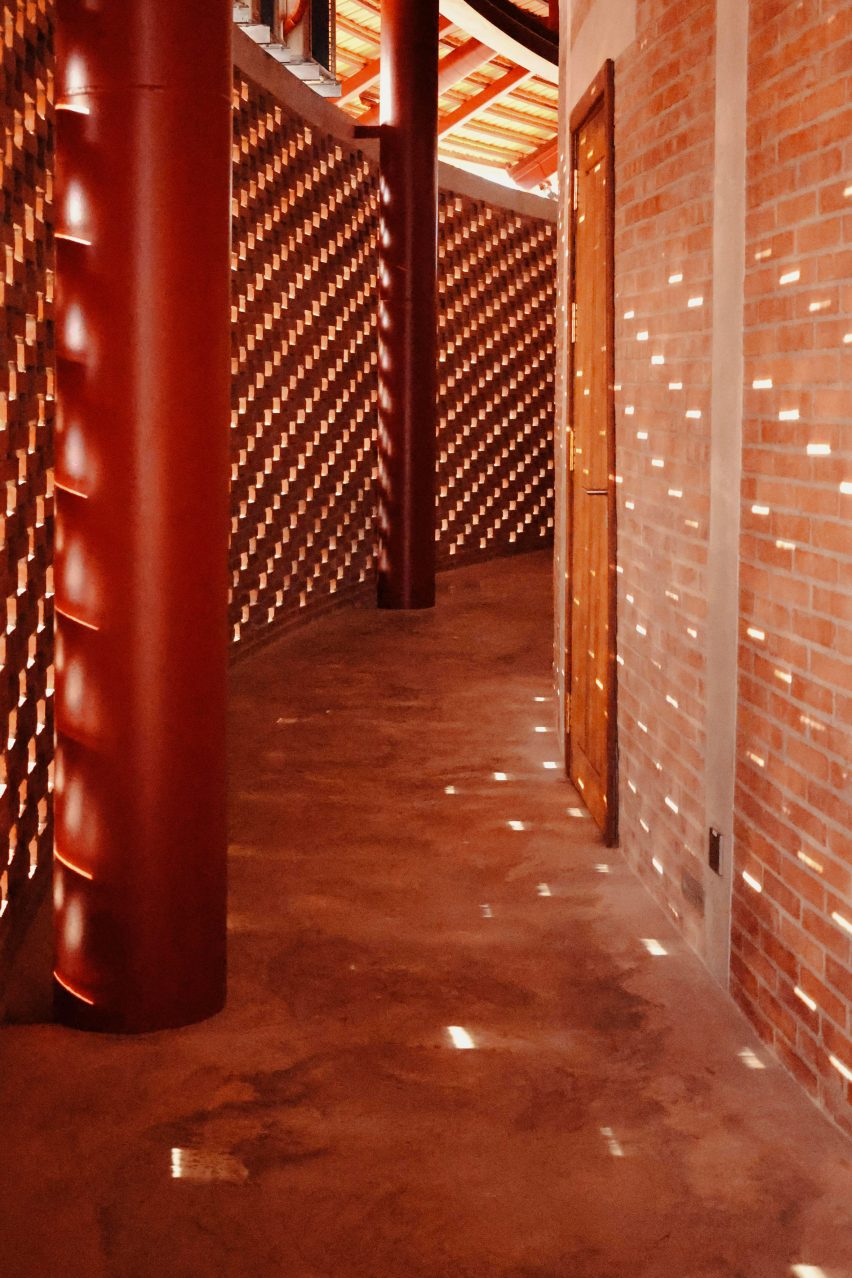
Other projects in Cambodia previously featured on Dezeen include a cluster of houses by Bloom Architecture finished with handmade cement blocks and a school by Orient Occident Atelier with a gridded steel facade that doubles as a climbing frame.
The photography is courtesy of Atelier Oï.